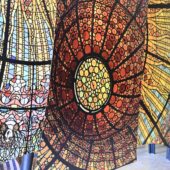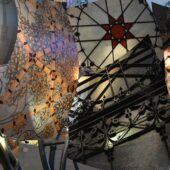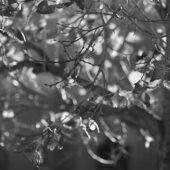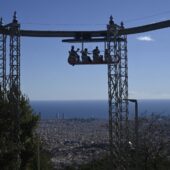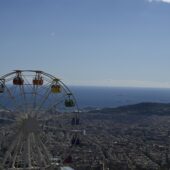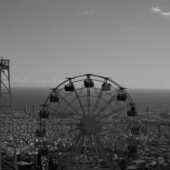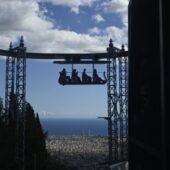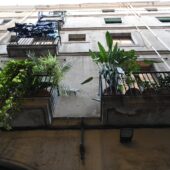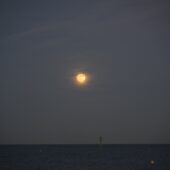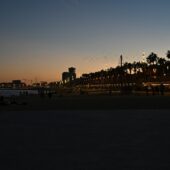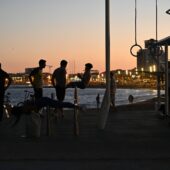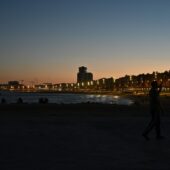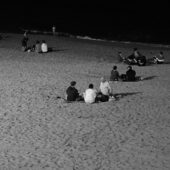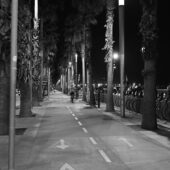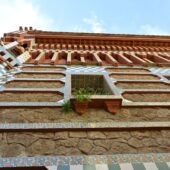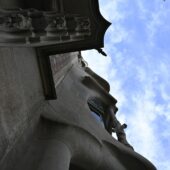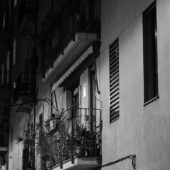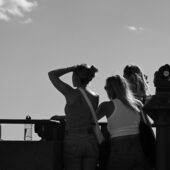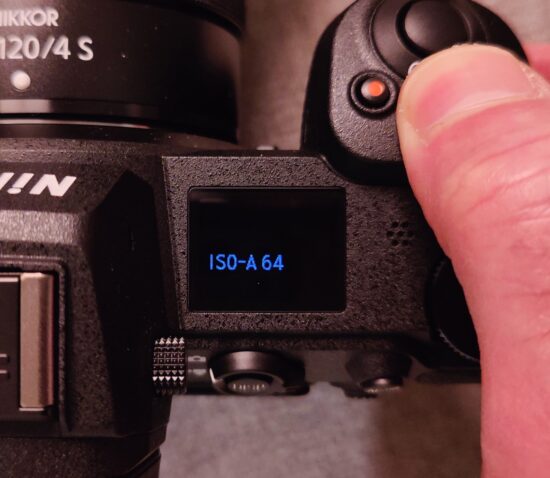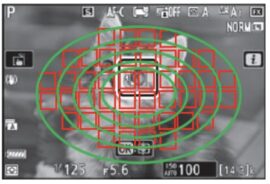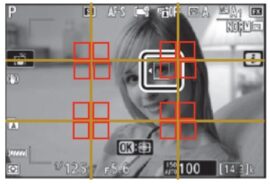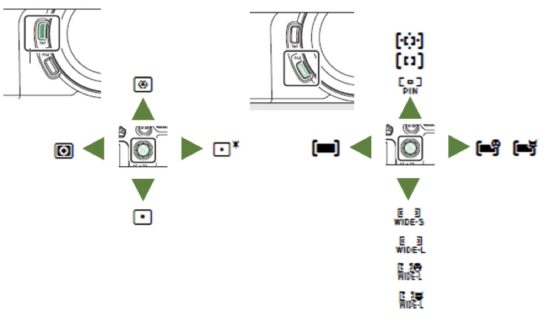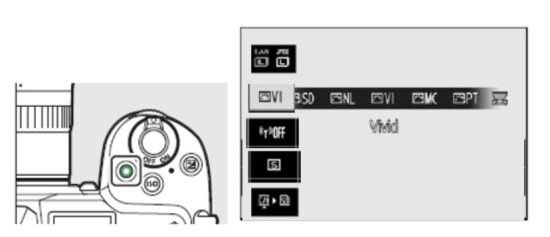A tale of two bodies – The next day: Living without a D by Thanos Deligiannis:
“Having to travel for business and staying over for the weekend, it’s hard to justify taking more than one camera, so I took the Z.”
Chapter 1 – Some background for understanding.
Before someone reads, I want to highlight that this is my personal journey, doing things as I usually do with any electronic device. I did not read the manual as part of the first use and in the same spirit, I did not read the Z7II manual beforehand. I note though that I follow multiple experts who have posted reviews, “what’s new”, workarounds, and other similar topics and I have a good understanding of what to expect in terms of new features and operations as well as how they operate. I consider such experts much more competent, are also presenting actual use examples, together with commentary of what to actually anticipate, including real-life performance, quirks, pros and cons. I further took a deep dive into the menu to familiarize myself with the contents and options and customize things like the “i” button, fn buttons, shortcuts, etc. My experience of almost 20 years is 99% on Nikon cameras of all kinds (incl Coolpix and 1) so familiarity with the ecosystem is there, consequently any difficulty identified, is mostly what this writer felt was not intuitive to him to use. For example, having assignable fn buttons, but not having the same opinions in all cases is not intuitive. More specifically AF mode selection can be either fn 1 or fn 2, but not the fn button of the lens (L-fn), whether mentioned or not in the manual is neither intuitive nor reasonable to this author, given especially my hand size and dexterity, the fn 1 and 2 buttons with the front jog dial comprise of a very difficult operation and it could be much easier with the L-fn button; I will note here that first instinct was to configure the L-fn button so I did not initially see the possibility of AF mode selection shortcut. The impossible task of making a one-glove-fits-all body, should not mean that each user experience is the same, but equally that designers should take that into consideration. Moreover, the image review has 3 options, one being “monitor only”, even if the manual describes that this means pictures will be displayed only when a monitor is used to frame the shot (p. 235), I don’t see why this is the only option, it should have been designed to allow shooting with the viewfinder and be able to see in the monitor if the user decides so for a specific shot (as the monitor image quality is far superior) and simulating a DSLR experience. Image review in the shooting process for most is an option and not a must, so freezing the viewfinder to image review should not be an obligatory part of the experience in shooting with the viewfinder. To me at least this is not an intuitive experience, especially since so far I haven’t seen any merit in doing an image review on the much inferior viewfinder screen (it is good to have as an option, but an option nonetheless). Yes, these can be fixed in a future firmware update, consider though at the same time, this would make (by addendum) the manual obsolete as to the functionalities referred to above…
Finally, on the topic of manuals, I want to point out that manuals are not always perfect, especially for such devices. One point to note here is that little to no detail in the L-fn button and its difference from the other fn buttons is included in the manual. Also, in trying to figure out the “monitor only” image review, one will first stumble across p. 182, where the description is “photos will not be displayed in the viewfinder”, with no further explanation or cross-reference to p. 235 where more details are included on this topic. Having played and tested the settings for a couple of minutes with 3 test shots was for me a more suitable learning experience.
As the brief for manual compilation, is to primarily address new users with zero experience and not ongoing users, I feel going through all pages may be a productive process for some, but each user’s mileage may vary.
Having clarified this, I feel some will resonate (thank you Whisky – JMO) with the points made above and the approach to using a new camera (or any device for that matter) and will better understand my experience as worded in this article, whilst others who follow a different process may have a different path than the one I describe. I try to be as honest and as transparent as possible, so the reader can get the most out of my personal journey.
I would also like to address many of the comments recommending the Z8, which I consider helpful and I will add some details on my selection process that led to the Z7II, so those looking for a Z can consider it in their selection process, as well as to add more depth to the below story of my second experience of the Z7II. I was always waiting for the Z8 and I always wanted to buy that camera as my 1st Z, a plan that was primarily affected by the loss of my standard zoom f-mount. Having to add the cost of the lens from day one, was tough on the budget. I intentionally did not look at many Z8-related videos on YouTube, especially compared to the Z7II, as I was certain that I would be convinced to opt for the Z8, which would be out of budget when combined with a lens, leaving a hole in my pocket – better to have money for travel and take pictures than a camera to use at home. So I have done the following, knowing from Nikonrumors.com that the size of the Z8 is larger, I checked DxOMark for rating and tried to understand whether the key advertised extra features of the Z8 over the Z7II would be a must-have for me. In such a process, I missed the “ergonomics” that I mentioned in my previous article, as I assumed that in that respect both cameras are the same. While doing my research a substantial promotional instant rebate on the Z7II went live (€ 800 on the kit with the 24-120) and thereafter I started looking for reasons to choose the Z7II and benefit from the rebate. What sold me on the Z7II over the Z8, was the compactness, the lower weight, and of course the price for the performance (especially image quality-wise). Note that I have captured one 21 permanent license which would also become obsolete with the Z8 NEF files, so another plus for the Z7II for me. The features of the Z8 (assuming the similarities with the Z9 for which videos I had seen) I did considered interesting, but not enough convincer for me, taking into account my main use case. The immense AF abilities, speed, FPS, and lack of shutter (together with the associated technologies included in the Z8 and Z9) were tempting, but not something I would need in my immediate future, so as to part with the cash premium. It is also very sad that nowadays, the “progress” of e-shopping has taken a toll on the mom and pop and brick and mortar stores, which means getting an actual demo camera on hand (let alone both) to physically experience is not the easiest of tasks and in my country (Greece) was not possible with the traditional camera stores that I prefer to support. So I had to choose blind (in Greece we call it “buying a pig in a sack”). Would I go today for the Z8, having used the Z7II, this will be one of the questions answered in this article.
What I usually had with me was a DSLR (300 and the 800 later) with a 24-70 f2.8 AF-S, and now I have the Z7II with the 24 – 120 f4 S, therefore consider for the purpose of this article that comparisons will be made taking in to account the prior go-to combo. The main use scenario for the combos is travel street photography.
So with some extended context added, let’s go to the actual experience with such in mind.
Chapter 2 – Getting prepared
So let’s start from the beginning. The feeling of doubt that only one camera was there, but was very quickly overcome by the packaging experience.
When buying the Z7II, I also purchased a pouch (a Manfrotto MB MA3 SB Medium) that is a very snug case for the Z combo. When with my large and heavy D combo, I would need a backpack to help me balance the weight for long walks, the Z combo offered me the confidence to use only the pouch for the camera. Everything else would go in the carry-on (that has the benefit of wheels) which I needed due to the nature of the trip being business and the company laptop, together with other business-related items could not be left behind. So Z7II takes the first point.
The pouch is far from being the perfect solution, but it is a solution that works well enough as a starting point, mind you that I added padding from other bags to increase its overall protection and rigidity.
Chapter 3 – Logging around
The Z7II was a pleasure to hold and move around. In long periods you can really feel the burden of the extra weight of the D combo and though the Z7II is not a Nikon 1, it was a much less burdensome experience. The use of the pouch, meant also that “instant” access was more intuitive and I was not walking around like a kangaroo with the sling-bag in front of me or like a bull in a china shop with the bulky bag on by back. It is also a more stealthy approach, a feeling that I enjoyed immensely.
Z7II, point two then. Well almost. You see the way I use the camera on the street, primarily composed of 1. switching between A/P priority modes, 2. switching the AF between auto / single point, 3. changing the metering from matrix to center weight, and 4. changing the exposure compensation; sometimes I may change picture control or the ISO. All such changes are usually temporary, meaning that after the shoot, I revert back to my main settings, which I used to do mostly on one hand, consulting the top screen with one eye on the road (what I would call “out-of-camera-mode”). This I could not do with the Z7II without checking my main screen and having to “pause” my walk more than usual, a habit that my other half hates (and complains about). For sure, showing the changes in modes for some functions (like AF, metering, and other assigned shortcut button operations) on the top screen is an easy fix/firmware update and will improve usability a lot, but is not here today – example, the change in exposure compensation or ISO, when the button is pressed, the top screen only shows the relevant value of mode selected (e.g, + 0.3, ISO 200) and is a very fluid experience to do in the “out-of-camera-mode”, why not AF, metering, etc (example below):
It’s also very convenient, if you set as I did, one of the lens’s rings to operate exposure compensation.
As you expect due to the overall size, the grip size compared to the D is smaller and for my taste an inferior experience to walk around with the camera in one hand, but not as uncomfortable since the Z7II compensates with the enlarged thump grip on the top rear right. My hand and tendons though did appreciate a lot the lower weight, even if the overall grip was not snugly for the palm as my D800.
Chapter 4 – Ergonomics and usability
This is (together with the viewfinder) the topic of schism for me. Though the viewfinder in the Z is not by choice and a compromise without a solution (at least in the near future) the ergonomics have more options and solutions today.
I feel that many times I find the Z7II and the D800 to put me in a position that I need to choose between two worlds. This feeling is what I cannot get past, why can I have in the Z7II a little bit more of my D800? As once quoted by Joey in Friends (episode the one with the jam) “Put your hands together!”. Yes, we all know that not all connections are possible, and not everything can be the same, but I feel that more could. I feel that a choice between Z7 and Z8 should not be connected to the fundamental ergonomics and usability, yes the Z8 may have more of something (or more buttons for very specific things) but the regular operations should be the same. One should be able to have both on queue and switch between, without needing two separate sets of muscle memory operations.
The overall flow of operating the Z7II is great, but I feel could have easily been much better, especially for those of us who are coming from the D800s and other similar designs, and even more so, considering the Z8 is designed in this way.
As anticipated the menu options of the Z7II are vast, this is a good thing in many regards, but in one, the swiftness, it is not. A lot of cycle-through options rather than switching between. I found many times that it took me more time to scroll to a setting than I would like to, and in the process, I missed it in the sea of scrolled options. The shortcut menus and “i” buttons make up for this in part. Some manufacturers I have seen (not only with cameras) implement two menu levels, a simple and if one wants an “advanced” can be activated with the functionalities not anticipated to be required on a daily basis – not saying that I want something like this, but that it is something that may make sense in future updates as cameras obtain continuously more features.
In terms of usability, I fell in love with the AUTO ISO function that I can configure as I please. It includes AUTO MIN SHUTTER SPEED, which can be further configured between 5 levels to prioritize faster shutter or lower ISO. This completely untied my hands and brain in terms of thinking about ISO!, though I would like to control the level with a shortcut button so I can have easy access between shots (otherwise I leave to prioritize speed). Having experienced this feature in daily operation, now it is as high in the list for me as is IBIS. On the subject of IBIS, the IBIS works wonders and takes the usability to the next level combined with the advanced AUTO ISO, you have fewer things to worry about when taking a shot being “on-the-move” (I stop to take the shot, on-the-move refers to the constantly changing location and limited time to setup camera and my body).
In terms of usability, the letdown was on the AF. As also noted in the intro the fn2 button is not ergonomic for me when I need to combine it with the front jog dial, and this becomes more prominent when my eye is looking in the viewfinder. Yes the AF operation is great, but we have not yet reached the level of MiG -31 “Firefox” (for those who remember the Clint Eastwood film) where a helmet reads our brain and selects the targeted focus area based on our thoughts. The AF will select based on an algorithm, and then focus accordingly showing you a lot of boxes that, in complex city scenes, sometimes are irrelevant in terms of the area covered by the AF (you may see a lot of boxes, but sometimes less is in the focused part of the image due to DoF). Many times, no matter how many times you have the camera refocus, it may focus on something else but not what you are interested in the scene. For this reason, I like to switch between auto and single point center AF (or from P to A mode where I have something like f 7.1 or f 8 preset to expand the DoF) when I see the AF is not finding my subject, a task not as easy for me as I’d like. When you further factor in that the AF-S has 9 options to scroll through, the task is not completed as fast as you may want, or before the subject moves meaning the shot is lost. The available workaround is to de-activate AF options and scroll through less, but this means major re-configuration of the camera between activities which I think is not reasonable; I see that you can have a button select a specific metering mode, so why not a specific AF mode (?). Also, since the AF now is sensor-based, why not a “center-weight” type of AF area priority, that will first prioritize subjects located in the center (before looking at the full frame) rather than the whole sensor area; It is even better with user-defined area size from narrow to wide, or a rule of thirds that will first look in the 4 cross-sections (inspired by the wide AF mode). These would be nice tools for wider frames where too much information on the scene potentially overloads the AF system with options. Since these are merely AF point selection/activation/deactivation it should be a simple firmware implementation (see below a very crude attempt to demonstrate).
A potentially good solution would be to add the sub-selector in the game and group accordingly, metering can then be selected directly by 1 of the directions of the joystick and AF can be grouped and scrolled (e.g., move right to select eye AF and scrolling between person/pet) (see below sample illustration), for me this is a non-fluid operation compared to my D800 that I can support, as a. it can be done in a parallel fashion, depending if I touch the jog or sub-selector and b. it gives me quick access to the new extra features.
Another difference is with my D, I have buttons for quick access left to the screen, which are thumb accessible, now there is a touch screen. So I say use it in this way and give me a couple of simulated buttons on the touch screen, the “i” is a nice thing to have but is not left thumb control of functions one may need. It could be that you can set pressing the movie-record button to activate something like a vertical “i” menu which will be thumb accessible on the touch screen (see below sample illustration).
Adding new features while sticking to old ways is not always productive and solutions should be offered to overcome usability issues that may arise, while in parallel using the available technologies in an innovative and creative way. I am an old dog that is stuck in its ways, but I will not say no to a new trick if a new “treat” is put on the table as a reward.
Chapter 5 – The viewfinder
A different perception. This is the given. A number of pros and cons. I will start with my truth, I prefer the pentaprism optical viewfinder. It is a personal preference for me and I assume for many, but how did the Z7II viewfinder compare after I had a little bit more time with it? Mind that I will not compare it to other products of similar electronic viewfinder as my experience is in fact non-existent on the matter, other than some hands-on in stores or from friends.
The summary, it is not bad, but (for me) it’s not good either. Having read that it is good, with little lag, high resolution, etc (from people comparing it to older versions or other brands) created to me the expectation of an experience that would be fluid in a manner of “low viscosity”; it still is fluid, but the viscosity is not as anticipated and there are hiccups. There is definite lag (from what your brain anticipates to see), especially when you have an image review on, or abruptly make focal length changes. As the mind has its own memory to process the details and fill gaps; vision includes a cognition process, so when there is a delay between the anticipated and the actual the lag becomes more evident at least to my eyes. Something that makes my brain sync out of sounding rhythm.
There is a lot of detail and a lot of information in the viewfinder screen, but as half are on top and half on bottom I had to move my eye around more than I would want (again muscle memory from D where information is on the bottom). Having said that the image quality is great, but the highlights and colors in certain cases felt alienating from the scene, and definitely an obvious difference between the viewfinder and the main screen.
Another thing I did not like with the viewfinder, is that a couple of times the luminance of the OLED was much higher than ambient and my eye having not adapted the iris from the lower light condition felt “attacked” with light. These cases were not common and lasted only a split second (the scenario could have been having zoomed in to a high-lit area in a dark environment and switching to the viewfinder), but still, an occurrence that can be prevented given the understanding that the whole device is primarily a light meter. In the same topic of lower lit scenes, the EVF is an alienating experience for me, and while I cannot say it was unpleasant in general, the more the ambient light was decreased the more I did not like the active illumination that added an unreal layer to the scene you are viewing. As to the low light ability, under the fall of darkness, a lot of noise, and artifacts, it was unpleasant to the extent that (I will exaggerate) “unusable” when compared to the optical viewfinder.
To give credit where due, I did enjoy the ability to micro-control the exposure compensation on the fly and being aware of if monochrome was selected and how the picture would look in black and white. I do love the surprise element of seeing directly the final result, having only seen the optical viewfinder, but the EVF live-view has its charms which I do appreciate.
Chapter 6 – The lens
Don’t be confused, the topic is the same (Z7II and D800). For me use scenario for the standard zoom lens is travel/street photography. For this purpose, I always lusted for a 24-120 f 4, as I found many times the 70 mm maximum of the 24-70 be a tad short and limiting to framing options of the outdoors. I am aware that I am no snipper, nor do I have the discipline to carefully stand and hold steady for every shot and get the maximum from a “marginal” shutter speed, so I was afraid to risk the full stop advantage offered by the 2.8 aperture over the f 4, as it meant that I would have to put my camera back in the bag earlier in the day, just logging it around and missing shots.
With the Z7II I took the opportunity to the 24-120 having read of the high ISO abilities and the IBIS. And the Z7II proved me right to do so. Combined with the AUTO SHUTTER/ AUTO ISO the IBIS and the 24-120 offer the complete package for all-day shooting. Of course, you will have blurry images if you are not careful, the 45 MP cannot be easily forgiven in this respect, such will be much less than with my D and 24-70 2.8 combo and would cover a longer spectrum of the day, distinctly during the hours closer to dusk and beyond. I don’t think I can remember more than a moment that I wanted to have the option of 2.8 DoF for travel/street photography, while I always remembered needing more than 70 mm many times in the past; the feeling is very similar to when I moved to full-frame. When I saw the 24 mm in its full glory (though the 105 mm equivalence of 70 mm on DX of the D300 was missed, it was not enough to overcome the glory of the “greater picture” (pun intended) offered by the 24 mm in full frame). The 120 mm is far beyond the 105 mm (70 mm on DX) and far more useful in many cases. The Z7II made for me (with my shooting abilities) the 120 mm possible, a gift that I will cherish for many years to come.
Chapter 7 – The shooting experience
For me, the second experience (and the first without another camera on me), was more confusing than the first. A mixed bag of sentiments, as I tried to build up from the experience of the first use and try to get a little bit more out of the Z7II than the first time around.
There is a learning curve and it sure is steep, merely because there is a lot of muscle memory and cognition process that one should overcome when switching to the new “modus operandi”. It is the combination of the overwhelming features and abilities, combined with the fully digital and assisted shooting experience (as pointed out by Yoms) that have your brain working double shifts to cope. The abilities of the Z7II are immense and it is designed in a way that someone who knows what they’re doing can get great results, while at the same time, someone with less or no experience can also produce marvelous images with minimum effort. The Z7II can make almost everyone a hero photographer in a split of a second, something that a D almost never could.
Where it failed to win over this author, is that when compared to the D, I find it harder to do things the way I want. I enjoy switching settings temporality between shots but ended up leaving the camera in charge more times than I would personally prefer. This aspect to me is the major letdown, as I find part of the process to be the dance between photographer and camera in changing the controls. Take out the mechanical–digital debate within the core of the Z vs D operation, I could still have had tons of fun, was I able to adapt some settings on the fly in a more swift and intuitive (Z8) manner.
Among the big benefits of the Z is that it is designed to be more forgiving than the D, particularly when you don’t take time to consider your shot, but at the same time in conjunction with its endless available options, it forces you to surrender changing settings between shots. This makes you become less involved with the subject of your image and subsequently don’t take time to actually consider your shot, resulting in a catch-22 in this regard when viewed next to the D.
I definitely appreciated many of the advantages highlighted in the above chapters. I definitely shot more than I would have with my D, merely because the Z7II, being a newer camera, meant I could shoot with ease more hours of the day, as the more capable sensor in low light situations and included features that assist in that regard. These features though, have nothing to do with the mirrorless format and it could have been a D900 that included the new sensor/processor, settings, IBIS, etc.. Equally, though the compactness and light weight of the mirrorless have played a key role in keeping the camera on hand rather holstered.
In reviewing the contents of the memory card after my trip, I saw exactly what I described above, more pictures, more impressive pictures, less jittery ones, but more that were different from the initially intended by the photographer (eg different focus area) and less overall “atmosphere” in the full set. One can easily see in the slideshow an aura of point-and-shout type of images rather than a series of moments taking place around the photographer, being captured as they flee. Something I feel results mainly from the “disconnection” from the ambiance of the environment as a consequence of the EVF and the “disconnection” from the simple controls as a result of the many new offerings. This photographer needs a lot of work to come to the point he wants in dancing with the Z7II and even more to lead such a dance.
No matter what, the EVF is a self-illuminating projection device, projecting a perception of the environment and atmosphere, while the optical viewfinder a passive one, is an “unfiltered” connection with the surroundings. Solely with this description in mind, it is obvious that only the latter can truly allow the observer/photographer to genuinely sync with the world through it and the Z has a great handicap to overcome in this respect.
Chapter 8 – The minors
Having seen/read reviews and formed an expectation in my head concerning certain things, I would like to provide a small summary as it relates to still photography use.
Image quality, yes is a minor, it is a 45 MP full-frame sensor with no AA filter, you expect great images and you get great images. The results are sublime, nothing less than expected (definitely more).
Battery life is better than the reviewers had me anticipate, depending on use a full charge can do maybe one or even two full days of shooting (stills – for video I don’t know), but when you see the last bars, it’s not like with your D when it just meant you have a week of shooting left. My advice, get a second battery as I did and you will be fine.
Heat, while in the warm summer days of August, you would feel the extra build-up of heat in milder weather nothing in a “noticeable” manner was evident, but confining the camera to a snuggly case right after use and taking it out later you could feel heat as it had nowhere to escape. I do not know to what extent this will reduce the life of the camera, but definitely, I will be more careful not to immediately pack giving it first some time to cool. For cold climates, I think (correct me in the comments if wrong) it is not good to switch from very warm to cold and vice-versa so managing the heat is something to be considered with some care.
File size is also not an issue, memory cards today have enough capacity to cover the needs even of 45 MP in NEF+JPEG, but don’t forget, you take them home and still you need to store them somewhere. In accumulation, you will need to expand your storage capacity at home.
Flashgun I used on one occasion, and worked great as support in a lit environment. Have yet to try in a more challenging dark environment as I read the lack of AF assist light support is evident in use.
Shooting with the main monitor (not EVF) was a very good experience and one that I definitely preferred in cases where I could (like when I was sitting down), but for me, I need the “focus” offered by looking through the viewfinder, to help me sync to the world around me together with the camera. I like the main screen for weird angles when I don’t look at the same scene with my eyes, but for shooting straight (while your eyesight is looking in the same direction) I don’t find it a comfortable or immersive process.
Chapter 9 – Final thoughts
The second experience with the Z7II did not materially alter my views and what I described in the first story, but it definitely earned the Z7II a lot more appreciation of what I can expect in the long run when I get to know it better.
I have set myself the task of trying to answer a couple of questions. Please read in the context that I buy gear with the intention to keep (not resell) and keep in mint condition as I use them.
Do I recommend the Z7II? Yes, I do, it is a great device with a lot of potential and I will never regret having bought it. Should you get one if you own a D, well not necessarily, if you do not see any merit to the extra features for your specific use cases. If your pocket can support it go ahead, but I will not recommend (to those who love their Ds) to buy if there is no specific use scenario covered by the Z7II that one actually needs, and in order to financially support the purchase they need to sell their D gear. The reasoning is that a. the flood of used Ds may mean that they will not get a great deal today on selling the Ds and b. there will be a Z7III or II+ or IIs (that will be better), to be purchased when the money is saved up.
Knowing what I know today would I have gone for the Z8, well in a nutshell, no. Before you rush to judgment please read. The total amount I actually paid for the full kit after rebate was around € 2.550,00, the Z8 same kit would set me back almost double that amount before VAT (80% more in estimate), which means I would anticipate to receive almost double the camera. For my use case (don’t need the crazy AF, or burst), ergonomics aside, the Z8 I don’t think is double the camera. If I have actual on hands experience, this may change my mind, for the time being, considering what I gain with the Z7II in compactness and price difference I would still go for the Z7II. To avoid confusion, when comparing the two in standard retail price, of course, with what I now know, I would definitely go for the Z8, for the ergonomics alone.
Should you buy a Z8 or a Z7II, well first do your research, learn from my journey (and other writers), and decide on your actual needs, definitely the Z8 is the better camera and will hold better value (also resale) in the long run, as the newer, more desirable and higher-end camera, while also be getting more updates to the firmware, on the other hand, a heavily discounted Z7II should not be disregarded just because it not the Z8.
The Z being a new system, with material differences from the previous (D)omain, has a long road ahead to improve, innovate and incorporate the changes in more productive way, so (I think and hope) many models will come in the future to greatly surpass the current offerings – next level AI object based AF (“find the bird”), sensors that set AF using your eye movement, as well as other offerings of yesterday’s sci-fi are closer. I think the new technology has much more to offer, and as time progresses, the current Zs will be surpassed, to a level that we will not remember the Z7II or Z8 debate (or at least so promising and poZitive, I hope is the future for the Zs).
For me it is the Z7II for now (as long as I don’t get hands-on with the Z8 :p ) and the Z8 II or “+” or “s” in the future, if I am lucky enough to be in a position to afford it.
All images from the same trip and jpeg out of camera only resized (Z7II + 24-120 f4 S).
If you have an interesting idea for a guest post, contact me here.

